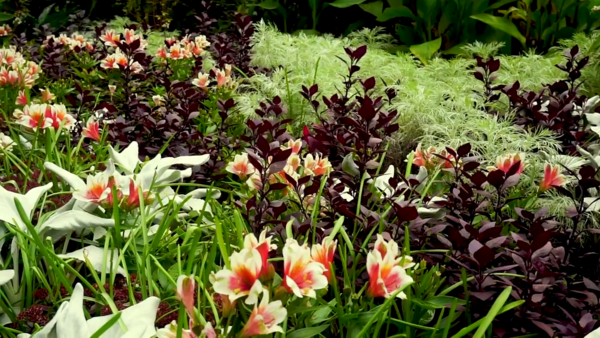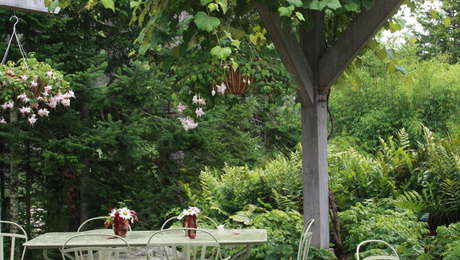Winter is an extremely tough time for gardeners. It’s tough to figure out how to help your plants get through the long, cold months, especially in the harsh northern climate. In our article “Shelter Plants From Winter’s Worst,” author Steve Silk gives some great pointers as to how best help your plants last through the winter.
When it comes to hydrangeas, I’m certifiably loony. Or, at least, I used to be. The source of my obsession was a variegated hydrangea. I bought it in full flower, and the azure, lacecap blooms were simply stunning against the backdrop of broad, spade-shaped leaves edged with creamy white. Then winter hit and it died to the ground. New shoots burst forth in spring, adorned with luscious foliage, but no blooms appeared. Ditto the next spring. And the next. Apparently the plant was root-hardy here, but its stems and flower buds—which form on year-old growth—were not. In my USDA Hardiness Zone 6 Connecticut garden, Old Man Winter prevailed.
But it got me thinking that if I kept my variegated hydrangea (Hydrangea macrophylla ‘Tricolor’) warmer, its stems and buds might survive. So I decided to cover the plant in winter. I bought one of those homely-looking Styrofoam cones sold to protect tea roses in winter, capped the hydrangea, and covered that with a layer of shredded leaf mulch and pine boughs. Then I waited until the next summer when—lo and behold—the hydrangea flowered. Read more.
Winterizing at Coastal Maine Botanical Gardens
Learn the tricks of the trade as the staff at Coastal Maine Botanical Garden prepares for a long winter.
1. When planting garlic in the fall, make sure to put about 6-8 inches of straw on top of your plants. When snow comes, cover the area with snow. This will ensure that your garlic plants are well insulated throughout the winter. Additionally, having this insulation will ensure that the garlic will not begin to grow prematurely if there is a warm day in February or March.
2. To protect apple trees, or other fruit trees with thin bark: use a roll of paper tape, which will act like an additional layer of bark and provide extra protection. Roll the paper around the trunk of the tree.
3. For frost-proof containers: cut some plywood to the size and shape of your container. Place the plywood on top of your container. This allows you to leave your potting soil in the pot, which means you do not have to waste any potting soil. It can be reused for the next season. Covering your container with plywood also means that ice will not form inside of your container, so you can avoid getting cracks in it!
4. To protect palm trees: surround the tree with fencing, creating a circular cage around the palm tree. If you’ve got some extra ornamental grasses, put those in the cage as well to act as a protective blanket for your palm.
5. Remember that young perennials need extra care in their first year. Make sure to give them an extra blanket of mulch or other insulation to make sure that they can grow to their full potential in years to come!
To learn more about the Coastal Maine Botanical Gardens, visit their website.


















Comments
Log in or create an account to post a comment.
Sign up Log in